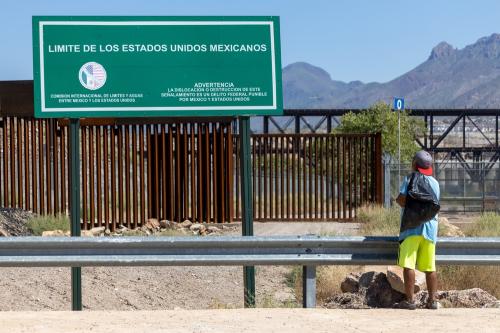In the 1980s BBC docudrama ‘The March’, hundred of thousands of Africans marched northwards toward the Mediterranean to escape starvation, prompting widespread panic in Europe about an impending ‘flood’ of ‘illegal migrants’. The current global food crisis is very unlikely to result in mass migration, and population movements that do occur will almost certainly take place within countries and not across borders, and for a short-period of time only. Still the crisis is likely to have a significant impact on those already displaced as refugees or internally displaced persons; and finding solutions for them will be part of the long-term solution to the food crisis.
The dimensions and dynamics of the food crisis have been widely reported: rice prices have increased in the Philippines by 70 percent in one year and tripled in Thailand since the beginning of the year; high food inflation is affecting countries as diverse as Costa Rica, Djibouti, Egypt and Sri Lanka. The global causes are increasing demand for food especially in Asia, reduced supply because of bad weather and increased bio-fuel production, speculation on futures markets, and high oil prices that drive up prices of fertilizer and transport. Their impact has been compounded by local factors: the displacement by political unrest of Kenyan farmers during the harvest period, limited access and rising transport costs in Gaza, poor March to May rains in Ethiopia, and conflict in Somalia.
The only source that has so far posited that the food crisis may directly result in population displacement is a recent report of the Hyundai Economic Research Institute which suggested that: ‘Soaring international grain prices will further worsen North Korea’s food shortage and encourage more North Koreans to flee the country’. There is no question that around the world the food crisis is impacting on poor people. The World Bank has estimated that a rise in the relative rice price by ten percent would result in an additional two million poor people; the UN Economic Commission for Africa estimates that the number of food insecure people could rise by more than 16 million for every percentage point increase in the real prices of staple foods, meaning 1.2 billion people could be chronically hungry by 2050. What is less clear is the extent to which hunger and poverty will cause people to move. Many of the most affected populations in Africa are nomads and pastoralists for whom movement is a traditional coping strategy. The urban poor are amongst the hardest-hit by the current crisis, which may preempt significant rural-urban migration. And it may be that ‘fight’ is a more effective strategy than ‘flight’ in this case – the governments in Haiti and Burkina Faso have recently responded to social unrest by lowering food prices.
Rather than directly causing displacement, it seems more likely that for some people the food crisis may become the ‘straw that breaks the camel’s back’, a final contributing factor to a range of other factors that make them too vulnerable to stay at home any longer. While the underlying causes for displacement are often political – for example conflict, the precipitant factors are often economic – for example hunger. In part the displacement implications also depend on how long the food crisis persists. If food prices return to something approaching normal within six months to a year, most people will find ways to see out the crisis, by borrowing or working harder or eating less. But the World Bank has estimated that food crop prices will remain high at least through 2009, and remain above 2004 levels until 2015. Sustained food shortages are likely to cause people to leave their homes.
There is a much clearer link between the food crisis and the situation of those already displaced. It is striking that the UN High Commissioner for Refugees was quick to back the unprecedented request by the World Food Program for an additional $500 million by 1 May. One third of Iraqi refugees in Syria are reported to be skipping one meal a day in order to feed their children. And the UN Relief and Works Agency, which works with Palestinian refugees, reports that whereas in 2004 it spent about $8 per refugee every two months in Gaza, today costs have risen to $19 to provide the same 60 percent of their caloric needs. These increases have forced the agency significantly to reduce the number of recipients of aid. In the Thai-Burma border camps rations for refugees have been reduced to 26 pounds of rice a month and no other food items – comprising less than half the daily protein and calorie needs – and nursery school feeding and health projects are being cut or terminated. Of course the food crisis is impacting on non-displaced populations too. In Sri Lanka UNICEF reports that 14 percent of children under five are showing signs of wasting and stunting, and that 29 percent of children younger than five are underweight – but the evidence suggests that those displaced inside their countries in particular almost always exhibit the most extreme rates of hunger, morbidity and mortality.
Many of the short-term solutions that are being discussed would benefit poor people whether or not they are displaced: cash transfers to the particularly vulnerable, lowering domestic food prices, food for work schemes, and food aid. At the same time displaced populations probably require particular attention. They are often the most vulnerable. They are often trapped in conflict zones or in camps across the border and cannot adopt the mobile strategies of other poor people. Hunger is compounded for them by numerous other problems, especially in camp environments. In the longer-term, the displaced can become part of the solution too. It is almost certainly true that the majority of the world’s displaced people are agriculturalists. They need to be able to return to their land and start farming again – to become providers instead of recipients of food.



Commentary
Op-edRising Food Prices and Displacement
April 23, 2008